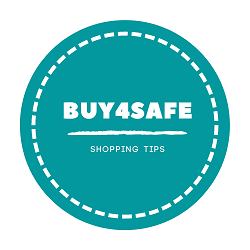Let’s face it, online shopping has become a huge part of our daily lives. We can buy just about anything from the comfort of our own homes, and have it delivered right to our doorstep. It’s convenient, it’s time-saving, and it’s often a lot of fun. But with the rise of e-commerce, we’ve also seen a spike in online scams. So, how can you make sure you’re shopping safely online? In this article, we’ll dive into the importance of safe online shopping practices, and give you 10 valuable tips to help you avoid getting scammed.
Understanding Online Scams
So, what exactly are online scams? Well, they can take many forms, from phishing and identity theft to fake websites and fake products. These scams can result in financial loss, compromised personal information, and even damage to your credit score. And the worst part is, they can be really tough to spot. But don’t worry, there are some warning signs you can look out for. Have you ever come across a website that just seemed a bit off? Maybe it had a weird URL, or the prices seemed too good to be true. That’s your intuition talking, and it’s often right. One of the most effective ways to avoid online scams is to look out for “Green Flags” and “Red Flags” when shopping online.
Green Flags and Red Flags: What to Look Out For
So, what are Green Flags and Red Flags? Essentially, they’re signs that a website is either safe and trustworthy, or suspicious and potentially scammy. For example, a Green Flag might be a secure website (look for “https” in the URL), a clear and transparent return policy, or trustworthy payment methods like PayPal or credit cards. On the other hand, a Red Flag might be an unsecure website, a lack of transparency in pricing or shipping, or unfamiliar payment methods. Here are some key Green Flags and Red Flags to look out for:
| Green Flags | Red Flags |
|---|---|
|
|
10 Tips to Safely Shop Online
Now that we’ve talked about Green Flags and Red Flags, let’s dive into our top 10 tips for safely shopping online. From using strong and unique passwords, to keeping your browser and operating system up to date, we’ve got you covered. Here are our top 10 tips:
- Use strong and unique passwords: Avoid using the same password for multiple accounts, and make sure to use a combination of letters, numbers, and special characters.
- Keep your browser and operating system up to date: Regular updates often include security patches that can help protect you from online threats.
- Use a reputable antivirus software: Antivirus software can help detect and prevent online threats, such as malware and viruses.
- Avoid using public Wi-Fi for online shopping: Public Wi-Fi networks can be unsecure, making it easy for hackers to intercept your personal information.
- Look for https in the URL: A secure website will always have https in the URL, indicating that your connection is encrypted and secure.
- Be cautious of email scams: Be wary of emails that ask for personal or financial information, and never click on suspicious links.
- Use a secure payment method: Use a reputable payment method, such as PayPal or a credit card, which offer protection against online scams.
- Monitor your accounts: Regularly check your bank and credit card statements for any suspicious activity.
- Avoid shopping on unfamiliar websites: Stick to well-known and reputable websites, and be cautious of websites that you’ve never heard of before.
- Read reviews and do your research: Check reviews from other customers to get an idea of the website’s reputation and the quality of their products.
- Keep your personal information private: Be cautious of websites that ask for unnecessary information, such as your social security number or birthdate.
Conclusion
Online shopping can be a safe and enjoyable experience, as long as you take the necessary precautions. By looking out for Green Flags and avoiding Red Flags, and following our top 10 tips, you can significantly reduce the risk of falling victim to online scams. So, next time you’re shopping online, remember to stay vigilant and prioritize your online safety and security. And if you have any tips or experiences to share, we’d love to hear them in the comments below.
Want to stay up-to-date on the latest online shopping trends and tips? Join our community and follow us on social media to stay informed and connected. Together, we can create a safer and more secure online shopping experience for everyone.

